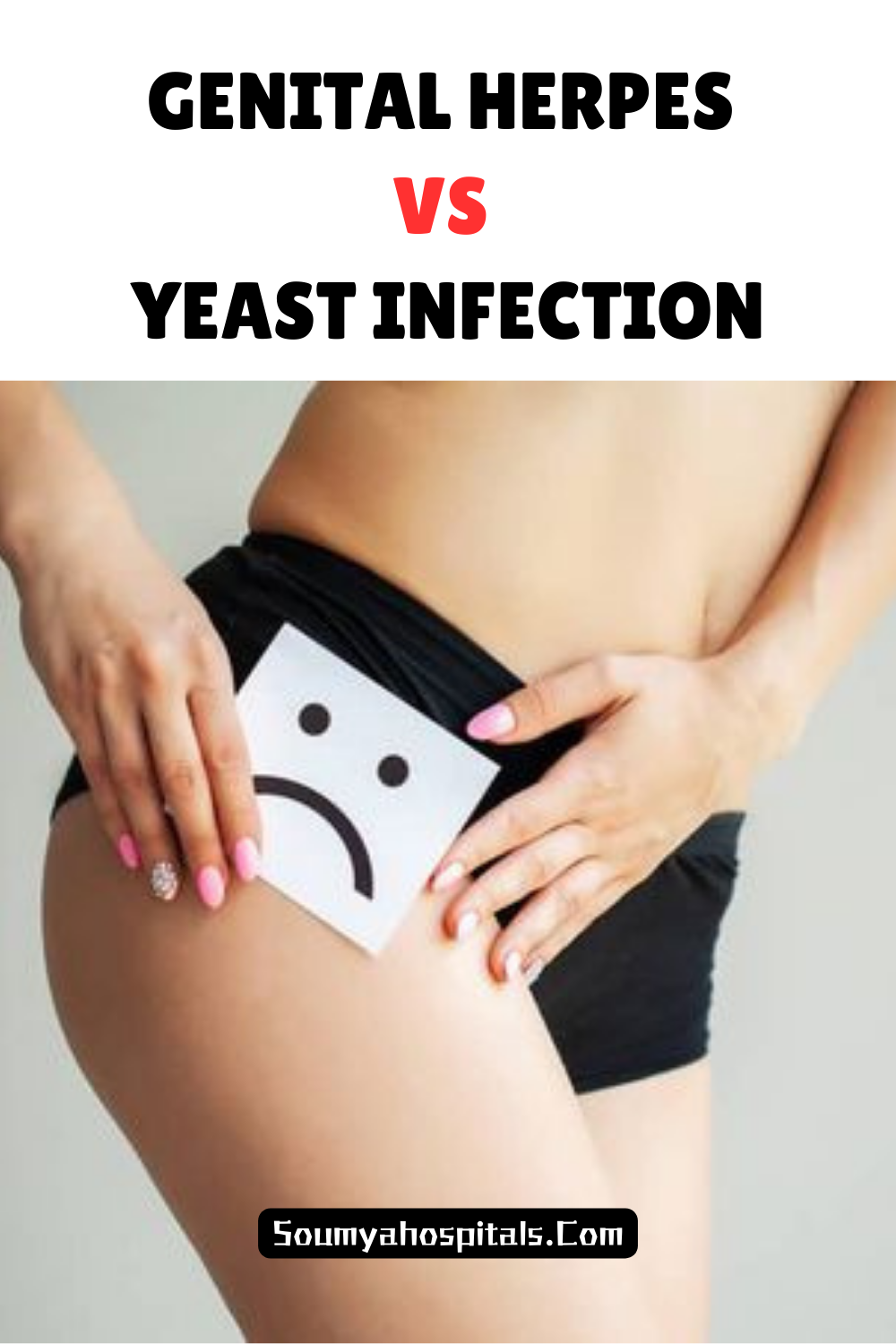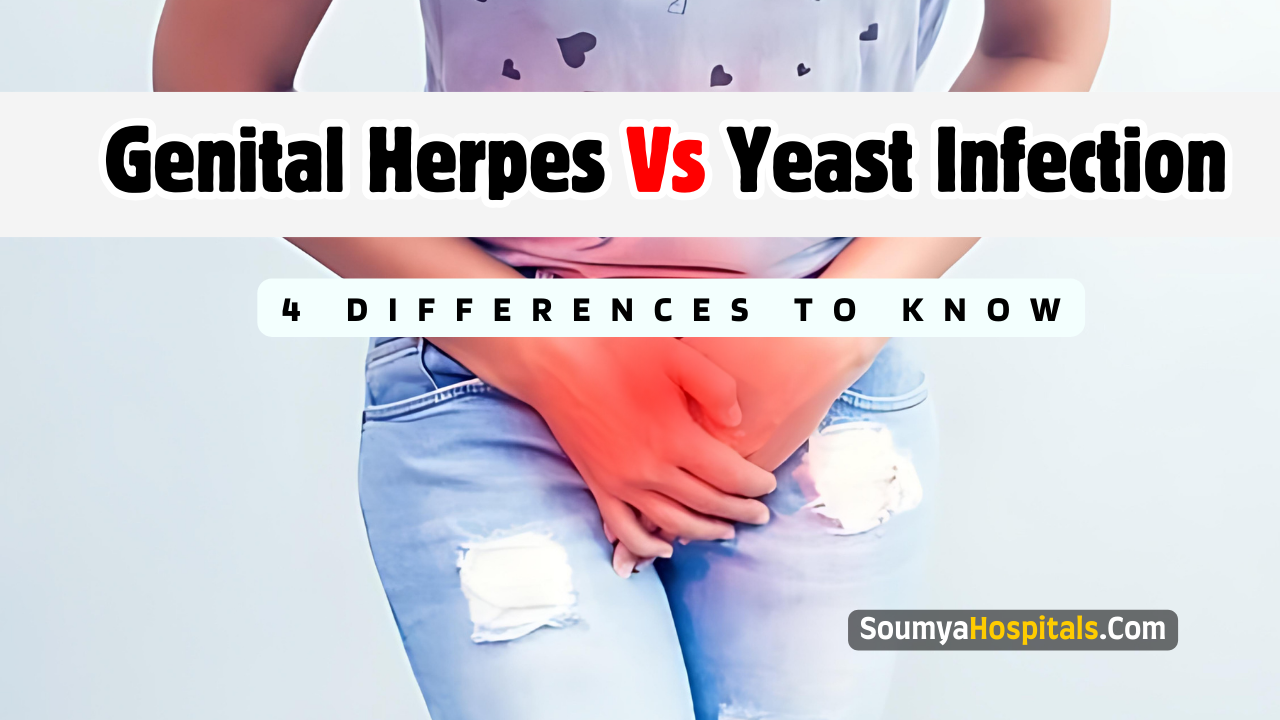Every time you experience redness or itchiness in your genitals, don’t assume that it is genital herpes. People do confuse vaginal or genital herpes with a yeast infection or vice versa, but unless you are sexually active and have an unsafe sex life, the chances of an yeast infection are higher.
Also Check: Can Bacterial Infections Lead To Cancer?
About 75% of women get a vaginal yeast infection at least once during their lifetime, while in the U.S., about 16% people aged between 14 and 49 get herpes each year from the herpes simplex viruses (HSV) 1 and 2. Other possibilities include bacterial vaginosis, mixed vaginitis, and trichomonas vaginitis. Women are more likely to suffer from both genital herpes and yeast infections.
Genital herpes is caused chiefly by the herpes simplex virus 2 (sometimes through HSV1), while yeast infection is caused by a fungus called Candida albicans.
There’s also a chance that it is nothing to be concerned about – in one study, 13.7% women who thought they had an infection in the vagina had no infection at all. This is not to say that you should not be careful. It is to say you should not self-diagnose or self-medicate.
Both genital herpes and yeast infections cause pain, itching, and burning sensation, but the two conditions are different. Here’s a look at the ways to distinguish between genital herpes and yeast infection.
1. Genital Herpes Causes Sores, Yeast Infection Does Not
You may still carry the genital herpes virus even if you do not have blisters.
The tell-tale signs of herpes are blisters that mostly appear on or around the genital area and sometimes the rectum and mouth. They eventually break and lead to painful sores near the genitals, thighs, buttocks. This is called “an outbreak.” These outbreaks may occur in loops, especially during the first year after infection. The first one is the most dreadful and may be the longest. But the frequency of these outbreaks reduces after a couple of years.
Yeast infection, on the other hand, does not manifest in blisters or sores. But men who have yeast infection may see red rashes on their penis. The pain associated with an yeast infection is much less than that with genital herpes.

2. The First Herpes Outbreak May Come With A Flu
The first time the HSV expresses itself after you have been infected – which could be 4–7 days after the infection, months, or years, even – the sores may be accompanied by flu-like symptoms like fever, body ache, and swollen glands.
An yeast infection does not cause these. Of course, you may simultaneously have a flu and an yeast infection. The blisters or rashes will be the telling difference.
3. Yeast Infection Causes A Cottage Cheese-Like Vaginal Discharge
Vaginal discharge is a symptom in both genital herpes and yeast infection. But in an yeast infection, the discharge is odorless and white and clumpy like cottage cheese. In genital herpes, the discharge is usually watery and smelly. In some men, an yeast infection can cause a white discharge from the penis too.
Women may also notice bleeding between periods. This mostly occurs when the cervix becomes infected. In any case, altered discharge or change in period patterns needs medical attention, and you should get it checked.
4. Genital Herpes Is Sexually Transmitted, Yeast Infection Is Not
Genital herpes spreads through unprotected vaginal, anal, or oral sex with someone who has herpes. If you receive oral sex from someone who has the oral cold sore-type virus (HSV1), it can also cause genital herpes. Even touching the sores on an infected person when you have broken skin can spread the disease. This is because the virus resides in the fluid found in the sores, and it spreads through contact.
The risk of catching the infection is highest when your partner has an outbreak. But you could catch it even when he or she is between outbreaks. What complicates matters is that your partner may not even know he or she has the virus.
Mutually monogamous sexual relationship is the best way to avoid herpes or any STD. Know each other’s sexual history. If either of you has herpes, consult a doctor to find the best way to manage it; there’s no cure yet. If you can have sex, always use protection.
Using condoms brings down the risk but does not eliminate it completely. If your partner is on daily antiviral suppressants, the risk is significantly low.
The virus can even be passed to a newborn by an infected mother. Neonatal herpes is a potentially fatal condition. You need to consult your gynecologist to find the best way to ensure your baby doesn’t get it.
Yeast infection caused by Candida albicans is a more common and much less risky condition. It is also known as candidiasis. The causes of yeast infection usually include reaction to certain medications like antibiotics and contraceptives; conditions such as diabetes, pregnancy, impaired immunity, and being overweight; hot and humid conditions; and too much sugar in the diet.

Also Check: Birth Experience NCLEX Questions
While yeast infections are not thought to be spread through sexual contact, it is best to abstain from sex when your partner has an ongoing infection. Pain during sexual intercourse is a common symptom.
Do Yeast Infections Cause Herpes?
Yeast infections do not directly cause herpes, but they can leave you vulnerable to the herpes simplex virus. Your body already has a certain amount of yeast, which is healthy. But when there’s an overgrowth, it indicates that your immune system is not functioning efficiently. This makes you vulnerable to other infections like oral or genital herpes.
Does Herpes Cause Yeast Infections?
Yes, in a way. The herpes simplex virus 1, which generally causes oral cold sores and sometimes genital herpes, deregulates your body’s defenses against yeast. So contracting oral or genital herpes also raises your risk of yeast infection.
Genital herpes and yeast infection are two different health conditions. They are not, however, mutually exclusive. One can lead to the other.
